Trekking can be both an adventurous & relaxing activity and that’s why people do trekking. Like other activities, you must have some gear and tools to enjoy it without any hassle. Let’s go through some must-have trekking gears.
Table of Contents
1. Trekking Shoes
I believe trekking shoes should be your first priority as a trekker. And if you think you can wear your formal, fancy or sports shoes, then you are highly mistaken. You can’t because they are not designed to walk in challenging terrains of your treks. As a trekker, you may encounter different terrains, such as rocky, snow-filled, or muddy, but this does not mean you must have different shoes. Having a rough and tough shoe at your disposal makes your trek easy and your feet happy.
Points to keep in mind while buying trekking shoes
- Grip – A good grip on the sole gives you the advantage of maintaining balance and easy walking. Check for deep grooves on the sole so that you can walk on slippery terrains as well.
- Comfort – Your shoe must be soft from the inside to keep aches away.
- Ankle support – Ankle support shoes help you climb and descend without twisting your ankle.
- Size – Go for a size bigger so that your feet have space and no shoe bites. It will also come in handy in snow terrains where you most likely wear thick woollen socks.
- Water resistance – These are versatile shoes as they can help you walk in a monsoon or snow trek.
Remember that your shoes should be able to handle everything, from rocky paths to thorny bushes, even splashing through water and walking on snow.
Read what our team member Bhuvi Uniyal has to say on Trekking Shoes: ‘Back in 2021, I began my trekking journey with the Triund trek. At that time, I was still in college and couldn’t invest in trekking shoes, so I did that trek in regular sports shoes. For my next trek, I saved up and bought my first pair of hiking shoes, the Quechua MH100, for INR 4,000. These mid-ankle shoes have been a great investment, offering the necessary ankle support without the discomfort often associated with high-ankle shoes.
With these shoes, I’ve completed several treks, including Ali Bedni Bugyal, Gaumukh Tapovan, Kedarnath, Kuari Pass, Dayara Bugyal, and a few others. They are still holding up well despite some wear and tear, and I believe they’ll last me for a few more treks. Investing in quality trekking shoes is crucial for any trekking enthusiast. Never compromise on good trekking shoes and a reliable winter jacket; they are essential for a comfortable and safe trekking experience.’
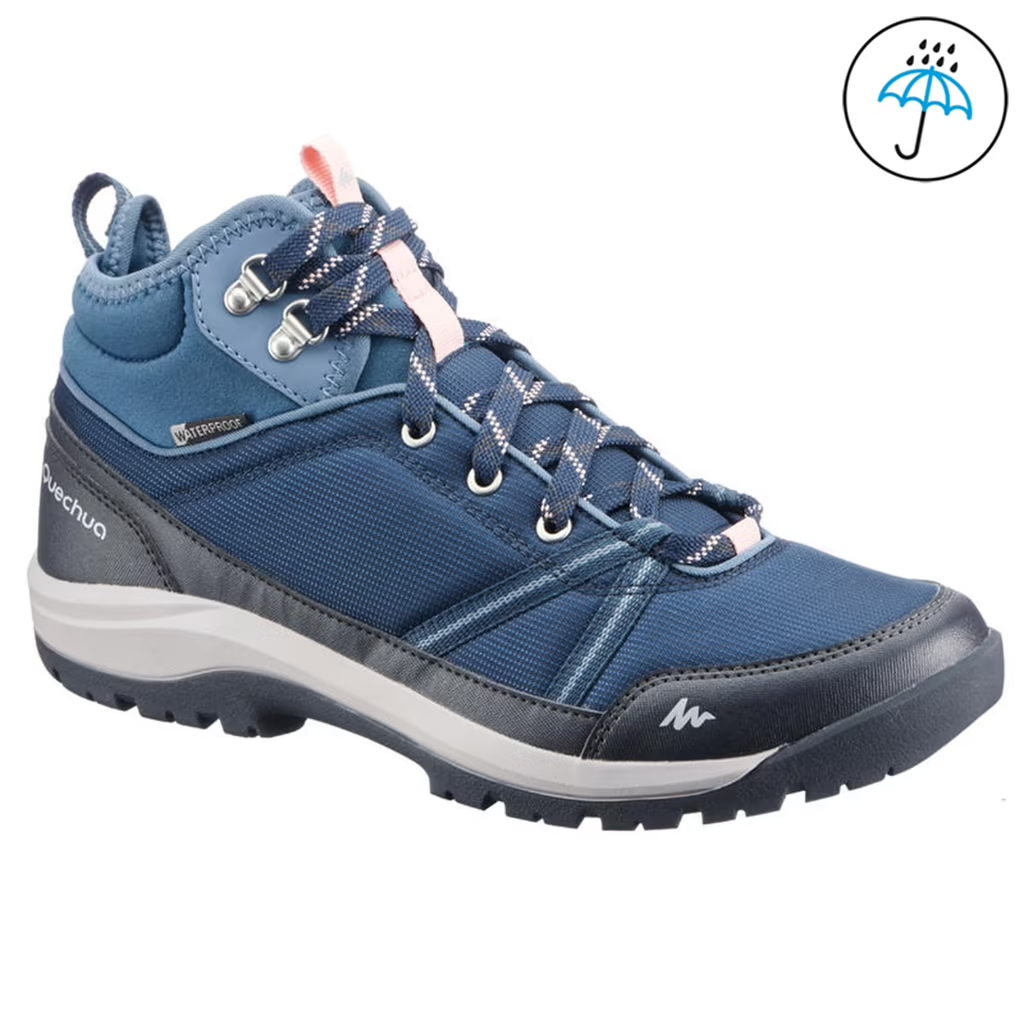
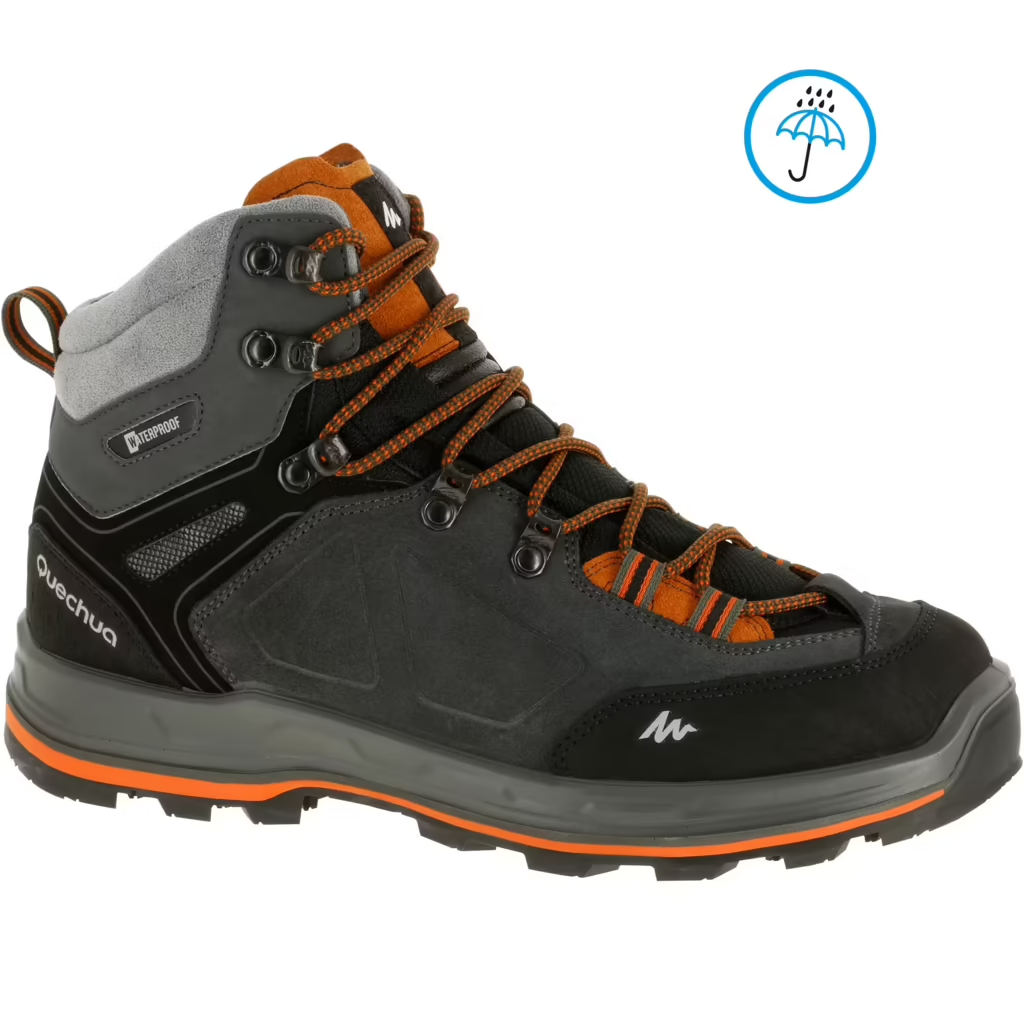
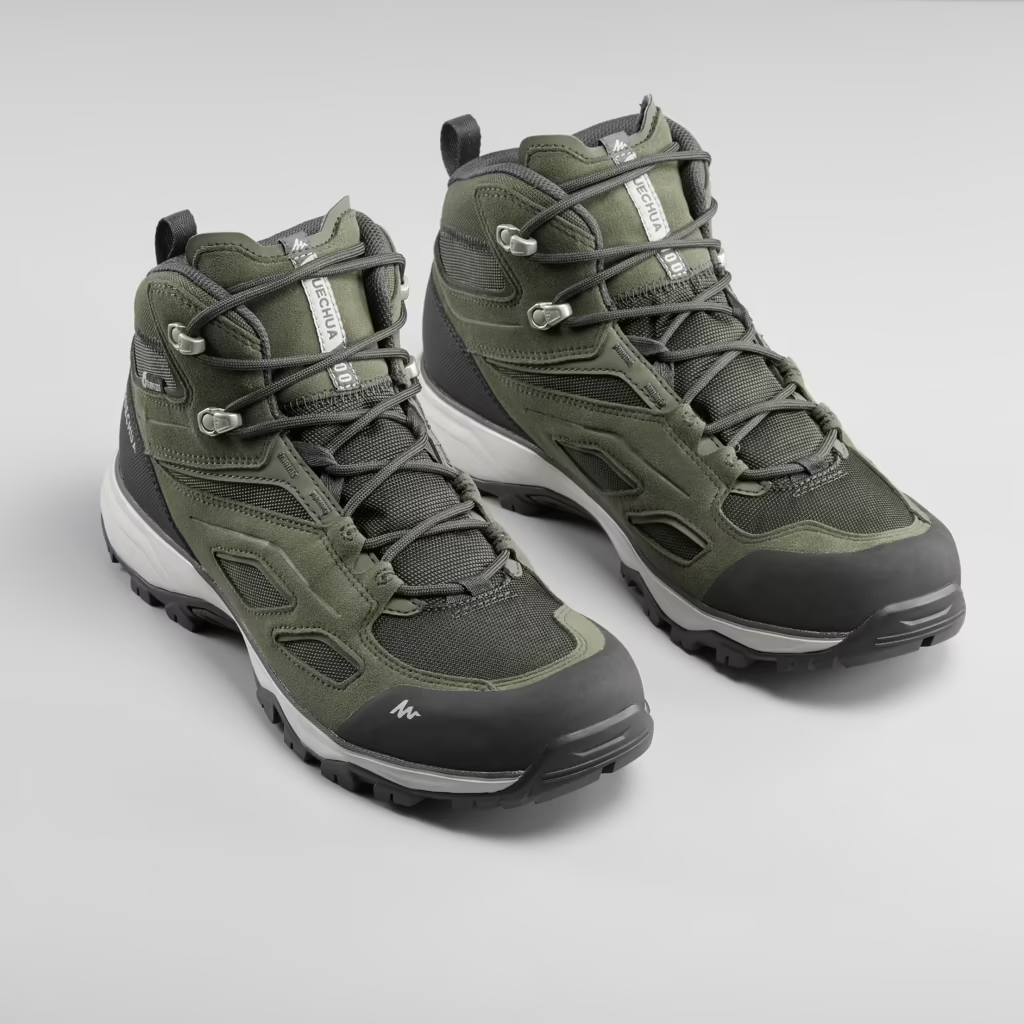
Recommend Shoes:
- QUECHUA MH100 (Mid Ankle): Good for easy to moderate treks
- FORCLAZ MT100: Good for moderate to difficult and technical treks
- Other brands to consider: Wildcraft, Woodland, and Bucca Bucci

2. Trekking clothes (trousers and t-shirts)
Clothes are crucial in backpacking as you cannot carry all your favorites in one backpack. Choose versatile, functional, and trek-appropriate clothes over fashion.
Pants: Choose elastane pants with water resistance and look for windproof ones to keep you warm.
Shirts: Your shirt must be quick to dry and breathable. Pack both a full and short-sleeved shirt, depending on the weather you have to face.
If you plan to go for winter trekking and camping, you have to pack thermals and woolen and thick clothes that protect you from bone-chilling snowy winds and snow. Also, to avoid exposure to direct sunlight, UV rays in high altitudes, and protection from snowy wind, you must include a cap and sunglasses in this list.
Tip: Instead of packing 1 thick article of clothing go for multiple layering. It saves you space and gives you more options to choose from.
Some other must-have items you should add:
● Gloves or waterproof ones for snow
● Rain Jacket or Poncho
● Extra Pair Of Socks
● Slippers
● Gaiters(To Protect From Snow)
● Heat Resistant Layers
● Sunglasses (To Protect From UV Rays)
● Cap or Beanie
● Scarf
● Towel(Quick Dry)
Adding these additional clothes allows you to face different weather conditions and enjoy your trek.

3. Trekking Bag
It is one of the important must-have gear for every trekker. During trekking, all the stuff should be light and well organized. You must invest in a good backpack with enough space for the stuff you carry while trekking. A trekker should also learn how to properly pack a trekking bag. The backpack should be waterproof, which can easily protect your essential items.
Some additional tips for selecting a suitable backpack:
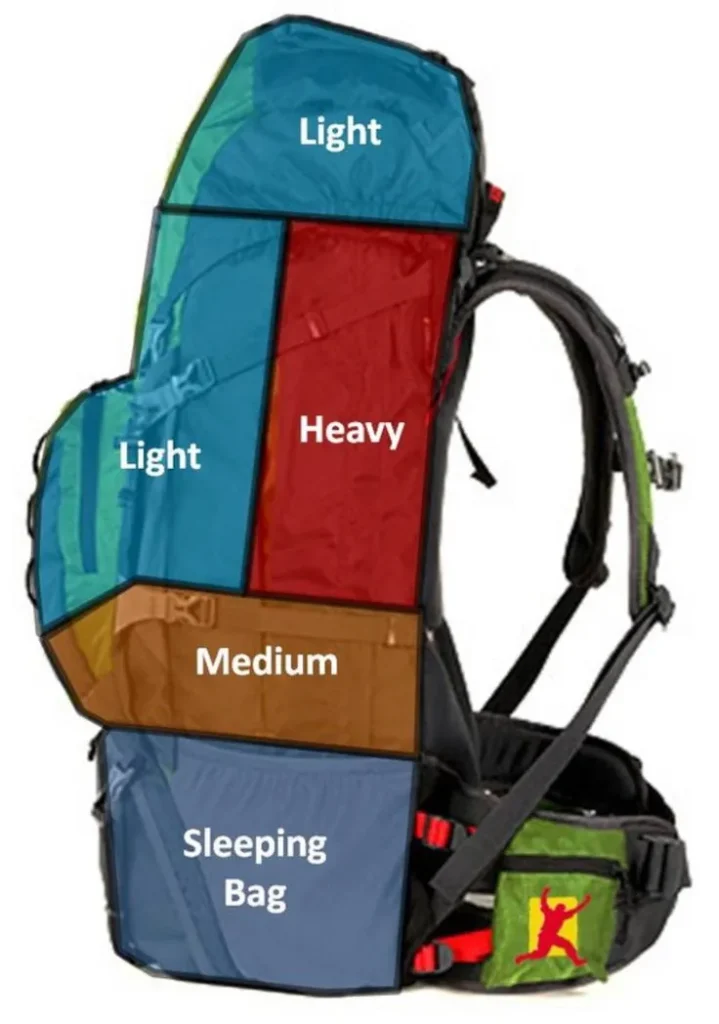
● Capacity: Choose a backpack with a capacity based on the duration of the trek. A daypack is suitable for short treks, while a larger backpack is preferable for longer trips. I use 50 liters rucksack for treks ranging from 3 days to 7 days. Choose the bag according to trek duration, height and weight carrying capacity.
● Weight: A lightweight backpack is preferable, considering you must carry it for an extended period. Also, you must weigh the empty backpack before adding your clothes or gear.
● Durability: Choose a rucksack with a high-quality material with the ability to withstand friction, rubbing or worn and torn. Weather can quickly change in the mountains, so look for a bag that can easily face harsh weather conditions like heavy rainfall, snowfall, or storms.
● Ventilation: Choose a backpack that has good ventilation so it protects you from sweating and makes you comfortable during the trek.
Some extra specifications to find an ergonomically fit backpack:
● Wear the backpack on both shoulders.
● The straps of the backpack should be two or more inches thick
● The lower part of the backpack should not hit more than 2 inches below your waist.
Carefully choosing the right backpack can enhance your trekking experience, so ensure that your gear is well-organized, accessible, and protected throughout the whole journey.
Recommended Brands: Decathlon, Wildcraft, and Trawoc
4. Multipurpose tool or knife
This should be added to your checklist. Imagine you’re going on a big adventure, like camping or trekking, and have nothing to protect you. A multipurpose tool famously known as a Swiss army knife is like a superhero gadget that is small and easy to carry. It’s not just a regular knife; it’s like a tiny toolbox with a big blade, a small blade, scissors, a screwdriver, a file, and even a little flashlight! So, instead of carrying lots of tools, you just need this one cool knife in your pocket. You call it a tiny helper ready for anything on your trekking adventure.
Some practical uses of these multipurpose tools are as follows:
● Cutting and slicing: It helps cut ropes, open the packages, and prepare food during the trek.
● Scissors: For cutting or trimming the bandages and tapes, or helpful in snipping small items.
● Screwdriver: For tightening the loose screws of your gear or equipment.
● File: It helps smoothen rough edges of gear, fix snags on clothes, and maintain equipment.
● Flashlight: It helps illuminate the surroundings and enhances the safety and visibility of the trail.
● Bottle opener: Opens the crack of refreshing beverages, so there is no need for a separate opener.
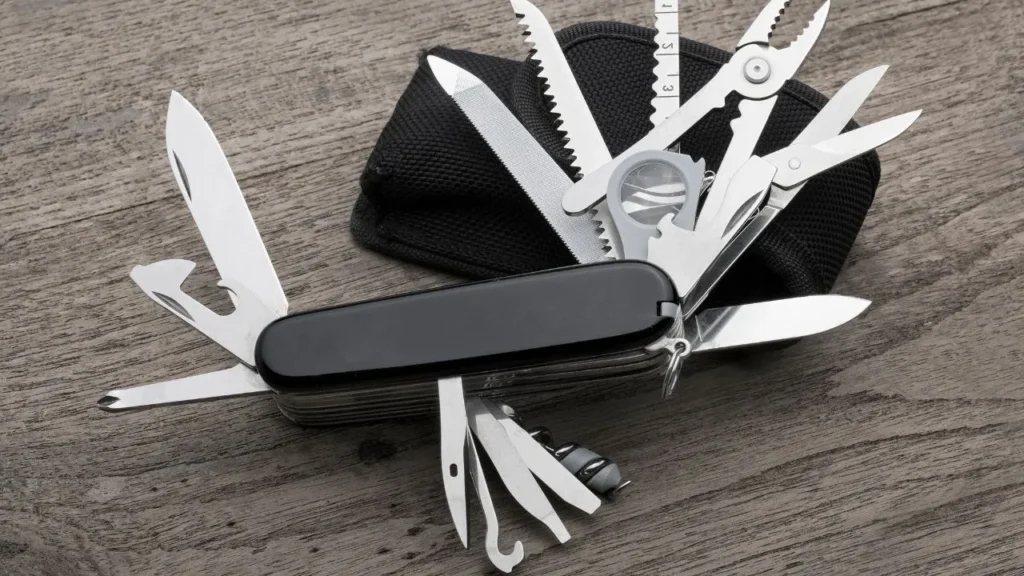
5. Sleeping Bag and Tent
You must have a sleeping bag and tent when planning an adventurous trip, especially if you are a solo traveller. Facing wilderness may sound fascinating but don’t forget you have to stay the night near a river, jungle, or at the top of a mountain. And being safe from all the natural elements in a trek is important. So, to stay warm, safe, and protected, your sleeping bag and tent become crucial.
Tips For Using Sleeping Bags:
a. The sleeping bag must be a fit
b. The bag should be clean and dry
c. Give your bag time to loft
d. Don’t cover your face inside the bag
e. Before going to sleep, wear inner fleece and cover the body with talcum powder to avoid bacteria.
f. Use a hot water bottle to make your bag heat fast
Your tent will protect you if the temperature goes down or from freezing winds. You should think of it as your home on a trekking journey. In cases you don’t have one, opt for trekking agencies like ours, as we provide you with top-notch sleeping bags and tents.
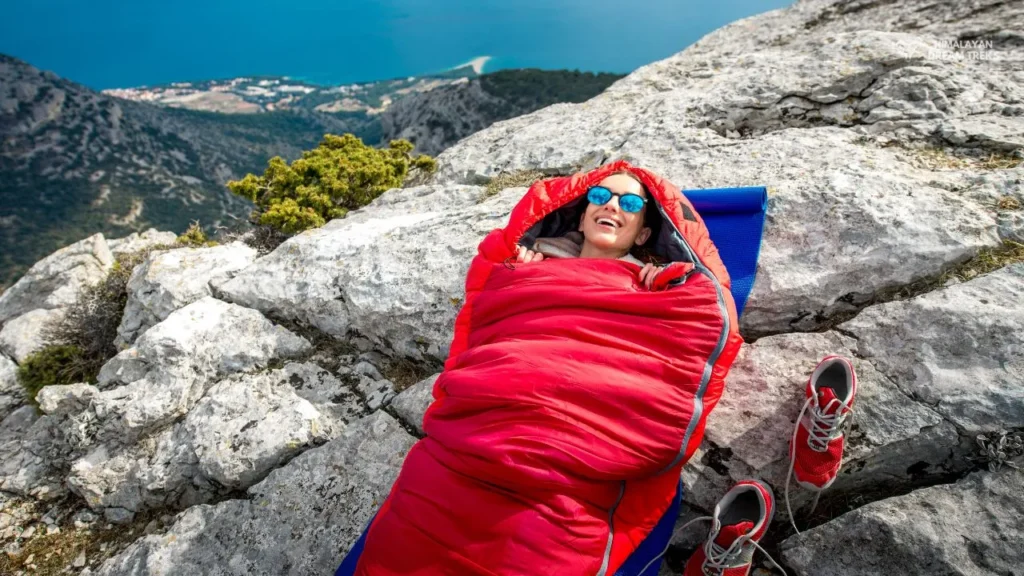
6. Medical kit
When you trek, you set out for a big adventure away from the city and its facilities as well, right? Well, sometimes, you might get small cuts or feel a bit sick, like catching a cold or having a headache. It’s a good idea to be prepared with a small medical kit, commonly called first aid.
Before you start your journey:
- Prepare yourself both mentally and physically.
- Ask your doctor to prescribe some medicine for fever, tummy ache, nausea, and other problems you might have.
- Put these in a small kit and carry it with you.
Some necessary items you can add to your medical kit:
● Bandages not just for minor cuts but also for blisters
● For cleaning, sanitizers are useful
● Special powders or drinks like ORS, in case you feel weak and low
● Insect repellents or bug repellent.
● Sunscreens for protecting your skin from harsh sun rays and sunburns.
7. Water Bottles, water filters, and cooking essentials
Water is one of the important resources in any case. To keep your vital organs from failing during trekking, you have to be hydrated. Also, you can survive without food for a week or more, but without water, you will only survive for a day or two. Carrying enough water with you while on the trail or trekking is recommended. A good rule of thumb is to have 250ml of water per half hour of hiking or one liter per two hours. However, this is just a starting point, and the amount of water you need can vary based on a number of factors.
When filling your water bottle from a stream, it’s important to let the water settle down before drinking it. This will help prevent brain freeze. During my trek to Gaumukh Tapovan, I learned this lesson the hard way by drinking unsettled water. So, take your time and slowly sip the water once it’s settled.
Tip: Use water fillers as it saves you the hassle of taking out the water bottle everytime. You can easily use it even on steep hikes without breaking a leg.
Cooking essentials are mostly needed when you are trekking solo or without an agency. Some important pieces of equipment are – a lightweight stove, a multipurpose utensils set, a matchbox or lighter for ignition, and a canister. You can include frozen foods that are easy to cook, like maggi or noodles.
Add energy bars and dry fruit cookies to boost your stamina and strength. Also, during the journey, you should have a portable water filter because it’s not guaranteed always to get clean water, so be prepared for it.
For those who choose to trek with agencies, ensure beforehand that they are going to provide meals or not. However, carrying snacks and other items to your personal preferences and emergencies is still essential.
8. Powerbank
In today’s digital life, we want to capture every moment forever electronically. And these gadgets run on a battery so, having a power bank is a sensible choice. It is well known that you will not have any charging point during a trek, so it is important to carry a power bank.
According to our experts, an Ambrane power bank with a capacity of 27000 mAh is reliable and recommended based on its performance. To protect your power bank during the trek, you can wrap it with an extra layer to ensure it remains functional.
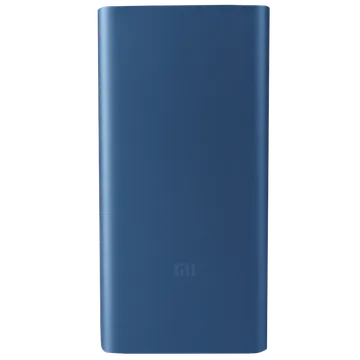
9. Navigational Tools
This should be an important gear for any trekker who wants to enjoy and not get lost. The navigational tool includes maps or compasses. For anyone who says we have mobiles and can use them for navigation, I want to tell you there is no point because if your phone is dead and the network is lost. Keep in mind that one wrong step or direction can lose you on the main trail. Experienced trekkers might face it if they are not careful with the directions.
If you don’t have a map, it is difficult for you to find a way which you have lost. The trail can be confusing, and you might be away from the trek so maps become your helper. Learn how to use a map and compass before your trek.
Tip: Your map should be water-resistant for easy usage, even during rainfall or snow time.
Beginners should choose a trekking agency for a hassle-free experience. If you choose Himalayan Dream Trek, we provide you with experienced and certified guides who take care of directions so that you can easily focus on your trekking without thinking about navigation-related issues.
Pro Tip: You can download your trail maps from AllTrails, Gaia GPS and use them offline on your phones or take a printout.
10. Headlamps
Trekker can add this to your survival gear. A headlamp is an easy and handy gear that can easily fit in your trekking backpack. At night, you can’t easily see and are not able to do much, so a headlamp helps you in the dark and won’t busy your hands, which is a disadvantage with torchlight. And now both your hands are free to do another survival task.

Final Thoughts
These are the 10 Must-have Gears For Every Trekker. It does not matter how experienced a trekker you are it is important to have these tools and gears in case of any survival situation. By carrying the right equipment, you can not only take care of yourself but also help other hikers in this wilderness and mesmerizing journey. With the right survival gear, you can enjoy the outdoors safely.
Do you have any tips or tricks regarding the trekking and hiking gear you use? We’d love to hear from you in the comments below!
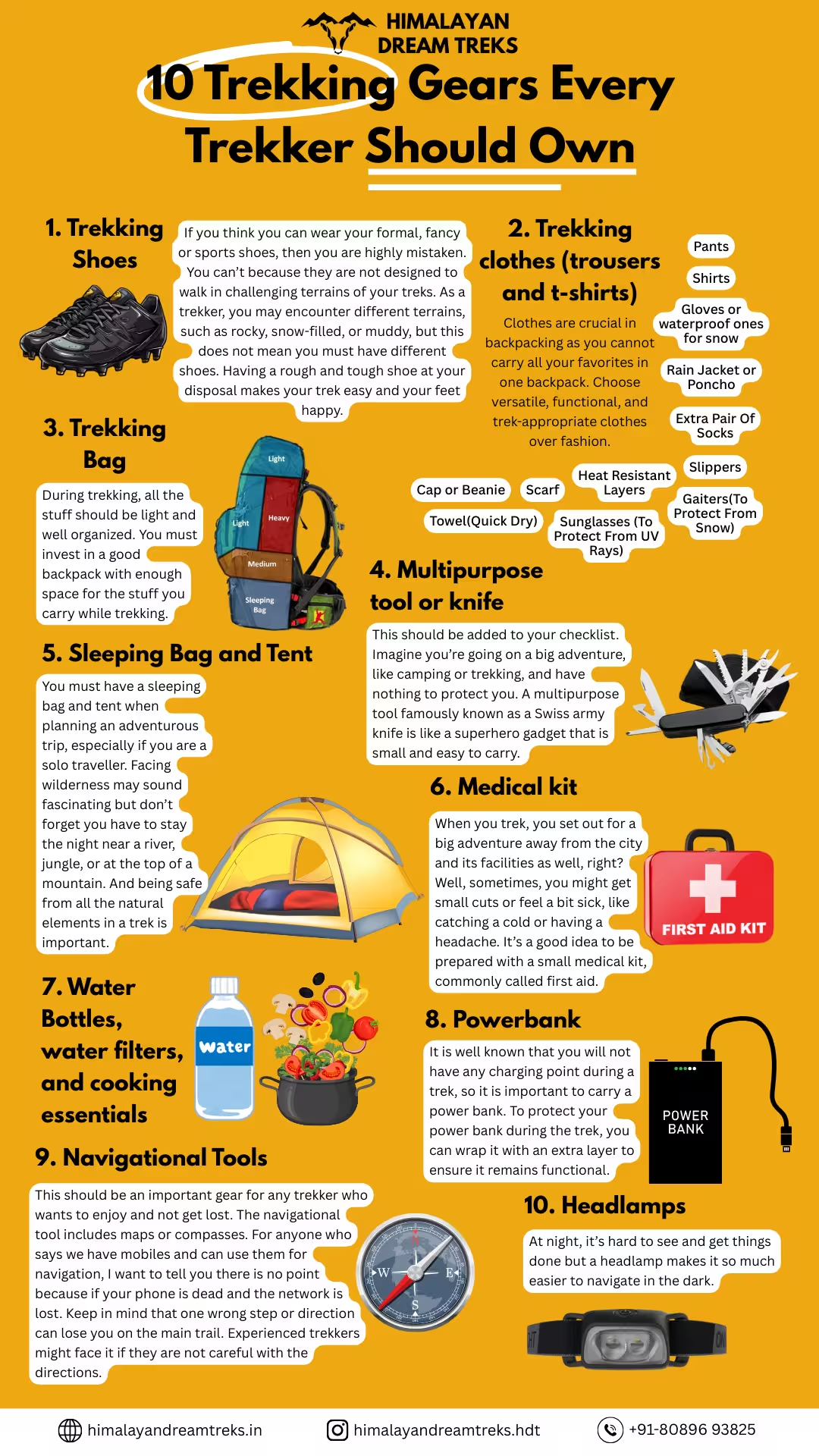

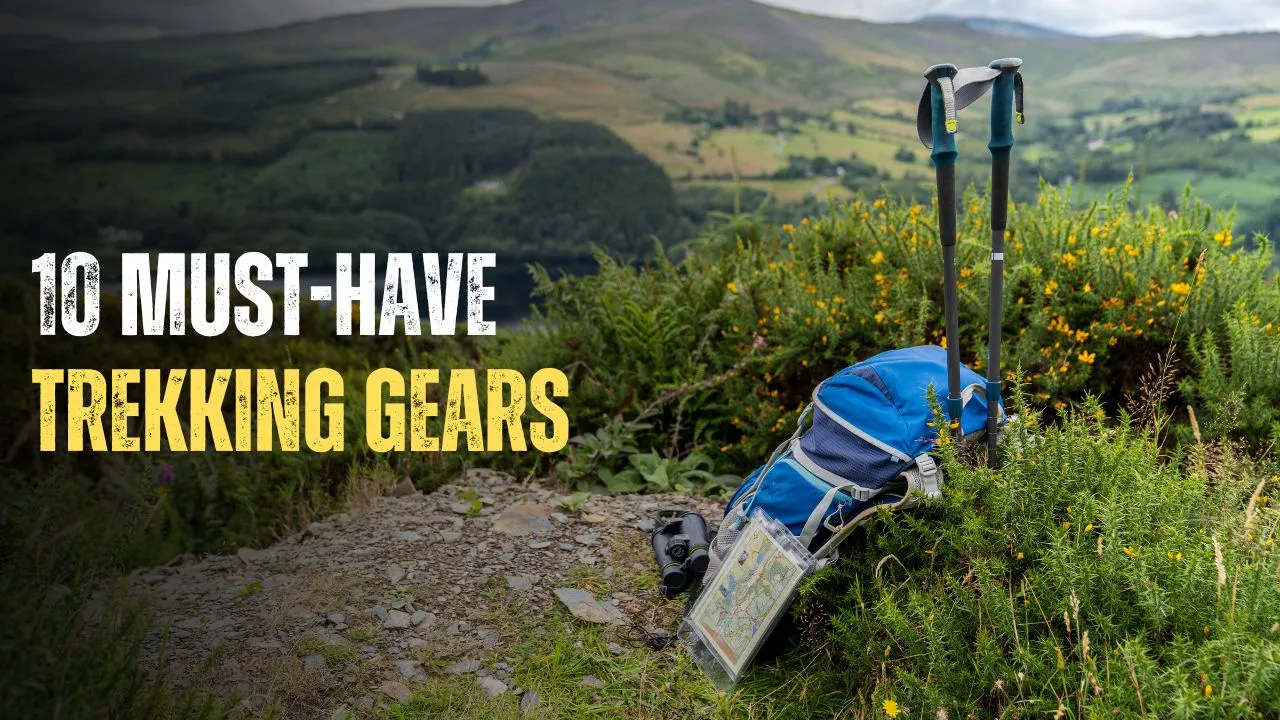
Leave a Comment